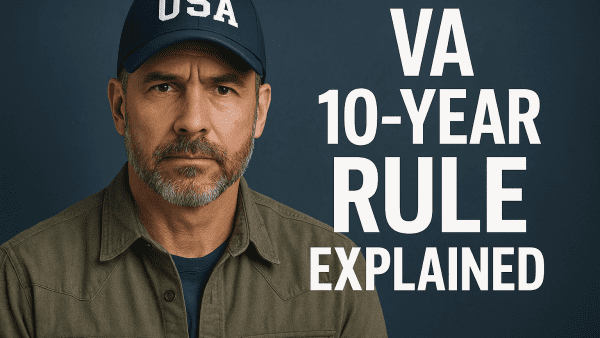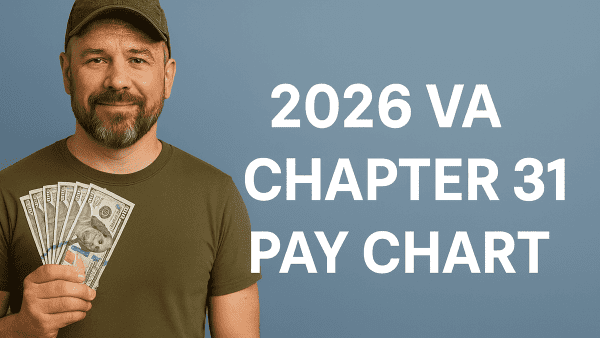Looking for Expert-Level VA Claim Answers?📱Call Us Now! 737-295-2226
Shin splints, medically known as medial tibial stress syndrome (MTSS), are a prevalent condition among military personnel due to the rigorous physical demands of service.
Activities such as running, marching, and carrying heavy loads can overwork the muscles, tendons, and bone tissue around the tibia, leading to this painful condition.
If you’re a veteran experiencing shin splints linked to your military service, you may be eligible for VA disability compensation.
Let’s explore more about how to get VA disability benefits for shin splints!
Table of Contents
Summary of Key Points
- Shin splints (MTSS) are common among veterans due to repetitive physical strain from activities like running, marching, and rucking during military service.
- A VA rating for shin splints ranges from 0% to 30%, depending on whether one or both legs are affected, duration of treatment, and the condition’s response to conservative therapies.
- To qualify for VA disability compensation, veterans must provide a current diagnosis, in-service evidence, and a medical nexus connecting their shin splints to military service or a secondary service-connected condition.
- Filing a strong VA claim includes submitting an intent to file, gathering solid medical and service records, attending a C&P exam, and, if necessary, appealing any denial or low rating.
What Are Shin Splints?
Shin splints refer to pain along the inner edge of the shinbone (tibia).
This discomfort arises when the muscles, tendons, and bone tissue become overworked due to repetitive stress.
Common symptoms include:
- Persistent soreness along the inner shin
- Pain that worsens during or immediately after exercise
- Swelling or inflammation in the lower legs
- Tenderness when the affected area is touched
Causes of Shin Splints in Veterans
Veterans are especially susceptible to shin splints due to repetitive high-impact activities required by military service, including:
- Running or sprinting
- Forced marches and rucking
- Jumping and obstacle courses
- Carrying heavy gear over uneven terrain
These continuous, strenuous activities can severely strain the tissues in the lower legs, resulting in chronic shin splints that persist long after service.
Diagnosis and Treatment
Diagnosing shin splints typically involves a physical examination and a review of medical history.
In some cases, imaging tests like X-rays or MRIs may be used to rule out other conditions such as stress fractures.
Treatment often includes rest, ice, compression, elevation (RICE), and the use of nonsteroidal anti-inflammatory drugs (NSAIDs) to alleviate pain and reduce inflammation.
Physical therapy and orthotic devices may also be recommended to address underlying biomechanical issues.
VA Disability Ratings for Shin Splints
The VA evaluates shin splints under 38 CFR § 4.71a, Diagnostic Code 5262, which pertains to impairment of the tibia and fibula.
As of February 7, 2021, the VA updated its rating criteria for shin splints, providing more specific guidelines:
- 30% VA Rating: Bilateral shin splints (both legs) requiring treatment for at least 12 consecutive months and unresponsive to surgery and conservative treatments like orthotics.
- 20% VA Rating: Unilateral shin splints (one leg) meeting the same criteria.
- 10% VA Rating: Shin splints in one or both legs requiring treatment for at least 12 consecutive months and unresponsive to conservative treatments.
- 0% VA Rating: Shin splints treated for less than 12 consecutive months, regardless of the number of affected limbs.
It’s important to note that “conservative treatment” includes methods such as rest, ice, compression, elevation, medication, and physical therapy.
The VA assesses the frequency, severity, and duration of symptoms, the effectiveness of treatment, and the impact on daily activities when assigning a rating.
Establishing Service Connection
To qualify for VA disability benefits for shin splints, you must demonstrate:
- Current Diagnosis: A medical diagnosis of shin splints.
- In-Service Incurrence: Evidence linking the condition to your military service, such as medical records documenting shin splints during active duty.
- Nexus Between #1 and #2: A medical opinion connecting your current condition to the in-service event or injury. This opinion will either happen at the C&P exam or a veteran can provide a Nexus Letter at claim submission.
Service medical records, personal statements, and buddy statements can support your claim, especially if the condition wasn’t formally documented during service.
Shin Splints as a Secondary Condition
Shin splints can develop secondary to other service-connected conditions, such as:
- Flat Feet (Pes Planus): Abnormal foot mechanics can increase strain on the shinbone.
- Knee or Ankle Injuries: Altered gait patterns due to joint injuries can contribute to shin splints.
- Obesity: Excess weight can place additional stress on the lower legs, exacerbating shin splints.
In such cases, establishing secondary service connection can increase your overall disability rating.
>> Click HERE to learn about getting a Nexus Letter for a secondary condition!
How to File a VA Claim for Shin Splints
- Intent to File: Begin your VA claim online and start your intent to file to preserve your filing date for back pay. You have one year from your intent to file date to submit your VA claim.
- Gather Evidence: Collect medical records, service records, and supporting statements.
- Submit Claim: File your claim through the VA’s online portal or by mail.
- Compensation & Pension (C&P) Examination: Attend the C&P exam if requested, where a VA examiner will assess your condition.
Be thorough and detailed in your application to enhance the likelihood of a favorable decision.
If your initial claim is denied or underrated, you have the right to appeal the decision.
>> Click HERE to learn about your VA appeal options!
Total Disability Individual Unemployability (TDIU) and Shin Splints
While the maximum schedular rating for shin splints is 30%, if this condition, alone or combined with other service-connected disabilities, prevents you from maintaining substantially gainful employment, you may be eligible for Total Disability Individual Unemployability (TDIU).
TDIU status compensates eligible veterans at the 100% disability rate even if their combined VA rating is less than 100%.
Challenges in Obtaining a VA Rating for Shin Splints
One common challenge veterans face when applying for VA disability for shin splints is the lack of continuity of symptomatology.
Veterans may develop the condition during service but fail to seek continuous medical treatment after discharge, either because they managed the symptoms independently or the condition did not seem severe enough to warrant medical attention at the time.
It’s a good idea to seek private medical evidence to help support your VA claim for Shin Splints.
Conclusion & Wrap-Up
Shin splints might seem like a minor condition to some, but for veterans, they can become a chronic, painful issue that interferes with everyday life and long-term mobility.
If left untreated or unacknowledged, shin splints can develop into more serious complications and impact your ability to work or stay physically active.
The good news?
You don’t have to suffer in silence.
If your shin splints are linked to your military service—whether directly or as a secondary condition—you may be eligible for monthly tax-free VA disability compensation.
Make sure you build a strong claim:
- Get a current medical diagnosis
- Prove the condition began or worsened during service
- Secure a solid Nexus Letter to connect it all together
If the VA denies your claim or underrates your condition, don’t give up!
You have appeal rights—and you deserve to fight for the benefits you earned through your service and sacrifice.
If you’re feeling stuck, frustrated, and underrated by the VA, you don’t need to fight this battle alone!
At VA Claims Insider, we’re here so you can maximize your benefits and secure the compensation you rightfully deserve.
WE’VE GOT YOUR SIX!
We’ve helped 25,000+ veterans increase their VA rating—YOU could be next!
If you need expert help navigating the VA claims process, our team of VA claim coaches is ready to educate and empower you to victory!
✅ If you’re sick and tired of waiting and want expert guidance to get the VA rating and compensation you deserve faster, CALL US RIGHT NOW at 737-295-2226 for a no-obligation VA claim consultation!
Want Expert-Level Help with Your VA Disability Claim? WE GOT YOUR SIX!
How does VA Claims Insider help veterans?
We make the confusing and frustrating VA claim process EASY through our 8-step proprietary system and one-on-one coaching; we’re the VA Claim EXPERTS you can trust, and YOU are never alone in this fight against the VA!
You’ll also receive VA disability expert Brian Reese’s SEM Method Blueprint—a proven formula that has helped over 25,000 veterans win their VA disability claims faster:
Strategy + Education + Medical Evidence = VA Rating and Compensation You Deserve FASTER!
Start today and unlock an exceptional level of service you deserve for serving our country:
➡️ You’ll hear from a VA Claim Expert over email within 15 minutes of signing up today.
➡️ You’ll hear from your Veteran Coach team within 24 hours of all inquiries during normal business days/hours.
➡️ Our terms are clear and simple: If we don’t win, you don’t pay. You have nothing to lose and everything to gain.
Click the red button below to start the process of winning your VA claim right now!
Veterans: Are You Ready to WIN, SERVICE-CONNECT, and INCREASE Your VA Rating FASTER? We Got Your SIX!

- VA Claims Insider is the #1 most trusted name in VA disability claims.
- Work directly with a VA claims coach who can help lead you to VA claim victory.
- 25,000+ disabled veterans served in our membership programs since 2016.
- 30% average rating increase for veterans who complete our #1 rated Elite program.
- 4.7/5.0 average rating out of 5,500+ total reviews; over 4,500 5-star reviews.
About the Author

Brian Reese
Brian Reese is a world-renowned VA disability benefits expert and the #1 bestselling author of VA Claim Secrets and You Deserve It. Motivated by his own frustration with the VA claim process, Brian founded VA Claims Insider to help disabled veterans secure their VA disability compensation faster, regardless of their past struggles with the VA. Since 2013, he has positively impacted the lives of over 10 million military, veterans, and their families.
A former active-duty Air Force officer, Brian has extensive experience leading diverse teams in challenging international environments, including a combat tour in Afghanistan in 2011 supporting Operation ENDURING FREEDOM.
Brian is a Distinguished Graduate of Management from the United States Air Force Academy and earned his MBA from Oklahoma State University’s Spears School of Business, where he was a National Honor Scholar, ranking in the top 1% of his class.



